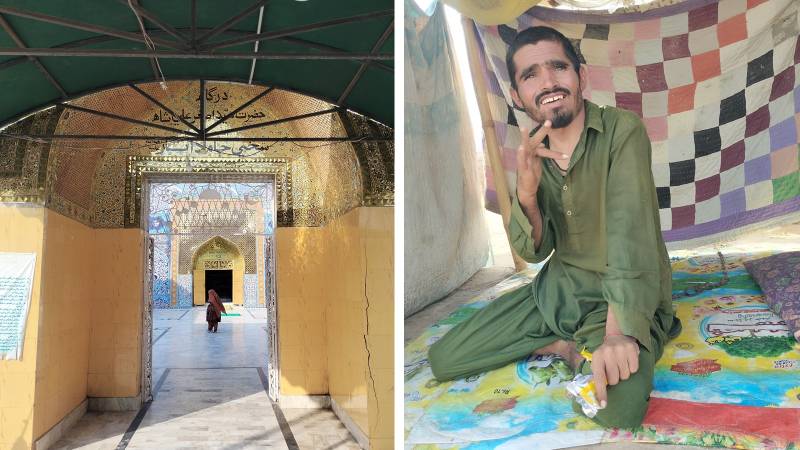
It was a scalding afternoon when we arrived at the Sakhi Jam Datar shrine, but in accordance with the shrine's custom, we left our shoes outside the main gate and proceeded barefoot towards the tomb. At that time, we felt that we had set our feet on fire because the shrine's tiles were all burning from the heat of the day. We were not the only ones walking on the tiles; there were a great number of men, women and children walking beside us.
When we entered the tomb, there were several women sitting around Sakhi Jam Datar's decorated grave, along with young children. We were all resting in the tomb, and several children were sobbing. Many people were seated in the courtyard outside beside the tomb; men and women were seated in separate areas.
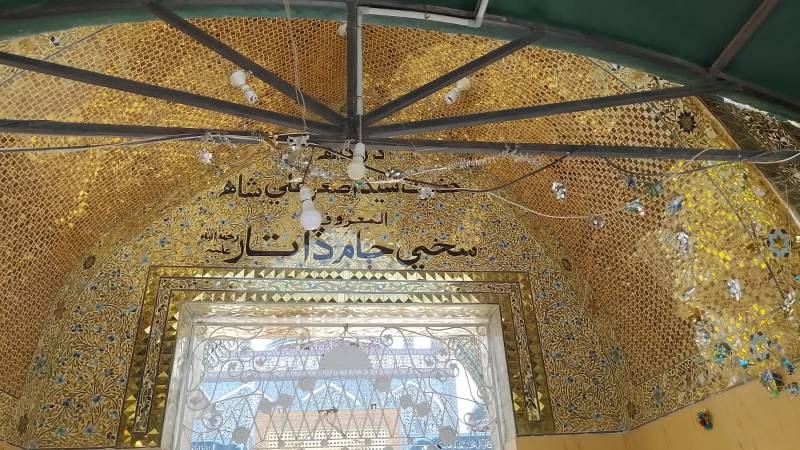
The Shrine of Sakhi Jam Datar is situated in Sakhi Jam Datar town in district Sanghar. This town is around ten kilometres away from Nawab Shah city, in the east, while it is fifteen kilometres from Shahpur Chakar town, of District Sanghar in the north.
We didn't come here for any sort of ceremony, ritual or practice. We simply came here for a visit because we wanted to see the tied-up “insane people.” This shrine is very popular in every part of Sindh due to the presence of the tied-up ‘insane.’
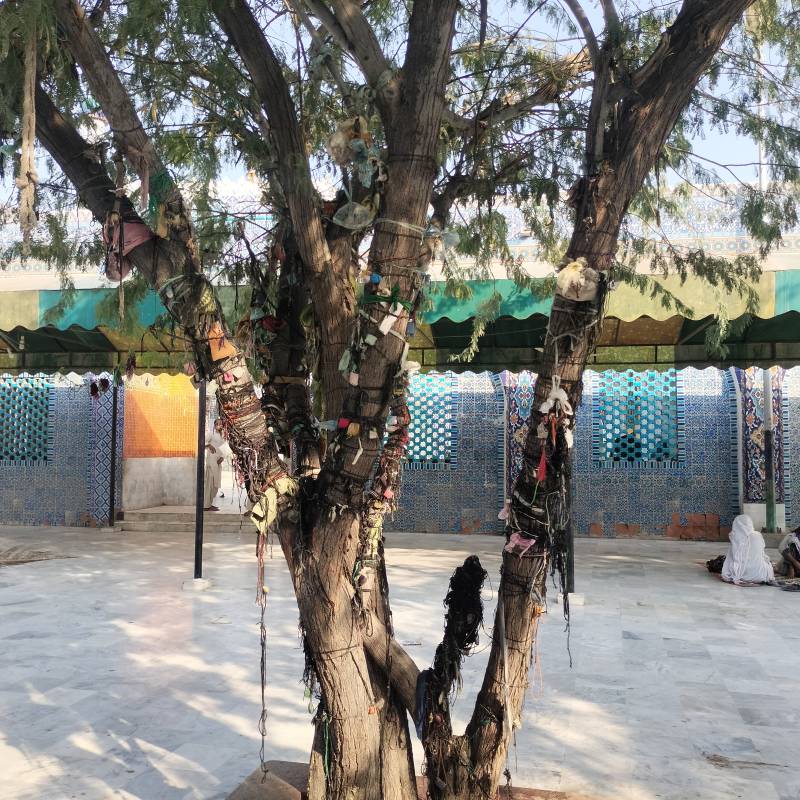
We looked everywhere in the shrine, and we were unable to see them. But we saw in the courtyard a substantial wooden structure with several black treads and various coloured amulets fastened on it. Black threads and an amulet were placed on top of this wooden component.
One devotee of the shrine tells us: "After coming here, all followers of the shrine, first of all, remove all their old amulets and threads from their necks. After that, each devotee makes a purchase of a new black thread and amulet from this shrine for their own neck." It meant they leave their old faith here and purchase a new one.
We observe that a long queue of thread and amulet vendors is waiting outside the tomb's main gate. New threads and amulets are being purchased by women for their necks.
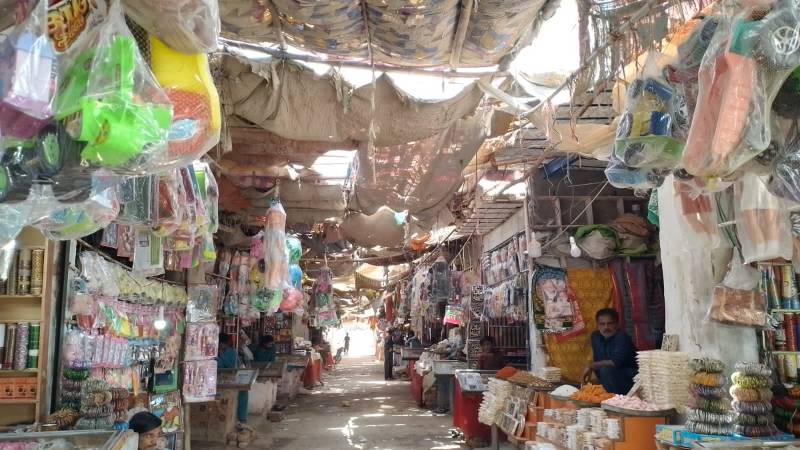
After visiting the tomb, main gate, and courtyard, we move to the resting area. The resting area is full of women, girls and children who are all devotees of the shrine; all of them from various regions of Sindh.
Following a conversation with him, we depart the shrine area and move in the direction of the west gate. We walk barefoot via the west gate and into a little market. The roads were scorching with heat from the sun.
After passing the market, finally, we find the ‘insane ones.’ It is very difficult to find them, because they are tied in an open area outside the shrine.
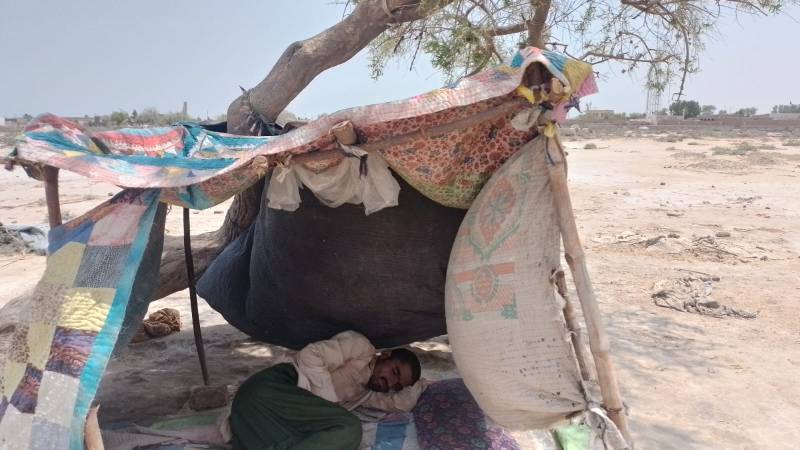
We see little huts under the trees. We observe that all the insane were tied in these huts with iron chains. These chains were secured with a lock. We find them all burned in the sun. One by one, they were tied separately in different huts; at that time, five of the ‘insane’ were separately confined in huts when we visited the shrine.
We see that inside one hut, half a bottle of drinking water was available, and in the other one, only a glass was available. Nothing else was there.
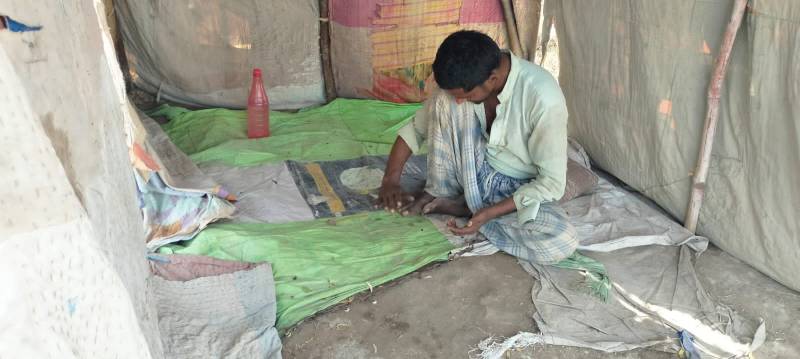
We return to the shrine after our visit to the ‘madman’ and his caretaker mother and meet the custodian. According to him, devotees receive two-time meals and accommodations from the shrine. He adds that "We do not tie female mad ones outside the shrine's courtyard; they live here inside the shrine without iron chains or locks."
He says, "If any relative throws away the key to the lock after locking the mad, it is in accordance with their faith, not because we asked them to."
We leave the shrine after discussing with the shrine's guardian, caretaker mothers, and different devotees.
After that, a lot of questions were running through our minds. Are we living in the Digital Age or in the Stone Age? Where is the health department of Sindh and Pakistan? Where are the human rights activists? The ‘insane’ people are burning in the sun under a tree.
It seems there is nobody to rescue them from here and admit them to the hospital.

